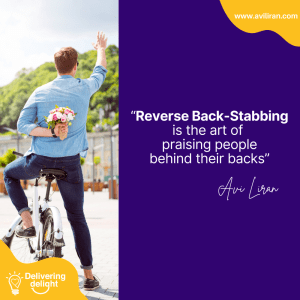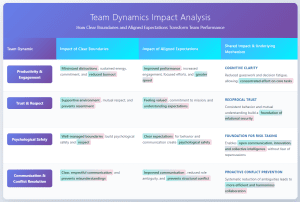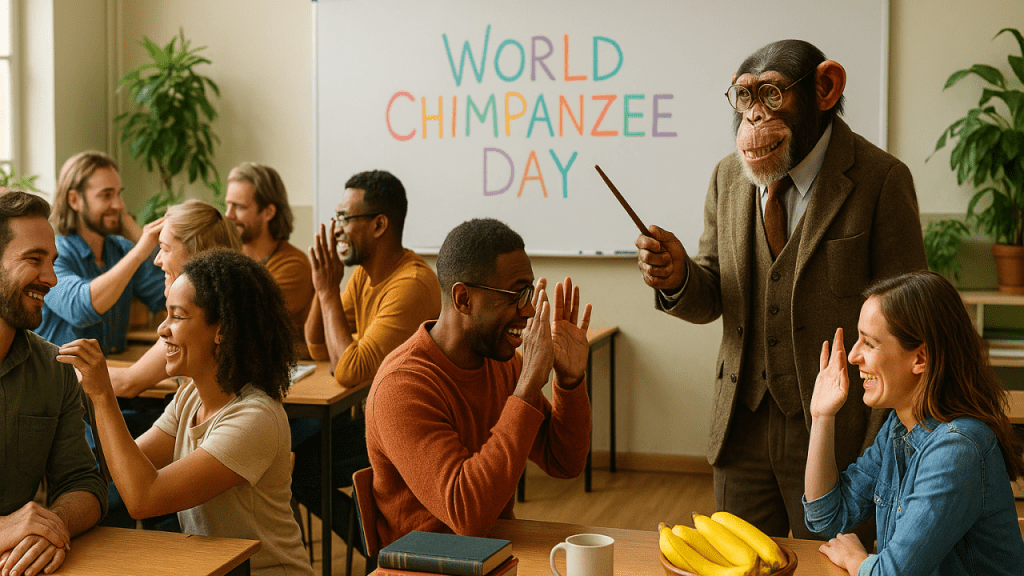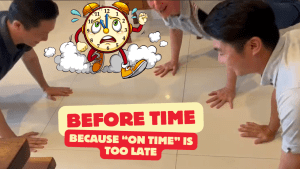Yesterday was World Chimpanzee Day, and if that doesn’t sound like a reason to celebrate, you’ve probably forgotten how it was to work in middle management.
Chimpanzees share 98.6% of our DNA. The remaining 1.4% is mostly spreadsheets, unnecessary wars, and an obsession with social media.
Thanks to Jane Goodall’s years with our jungle cousins, I’ve gathered a few joyful strategies to tap into the natural wisdom our ancestors still practice with ease.
🧘Patience as a Strategic Leadership Tool
Jane Goodall’s most profound discoveries came from waiting strategically. She spent over 180 days before any chimpanzee would let her observe them closely. By watching the same chimp for multiple days, she witnessed him modify a twig by stripping leaves, proving chimpanzees make tools.
“I think that to be a good mother, you’ll have to be patient,” Jane shared in her Adam Grant ReThinking podcast interview. I confess my redhead genes seem hardwired for quick reactions, especially when I encounter terrible service. If you are a “work in progress” like me when it comes to patience, then we definitely need to learn from our evolutionary cousins through practice and intention.
💡Leadership Insights: Like Jane’s chimpanzees, the most successful leaders gather information over time, observe patterns, and wait for the right moment to act. Recent studies confirm and expand on the benefits of patient leadership in organizations:
- Enhanced Team Resilience and Performance: Patience in leadership is linked to increased team resilience, better conflict resolution, and higher overall team performance. Patient leaders foster psychological safety and encourage open communication, which strengthens team dynamics and outcomes. (1)
- Better Decision-Making in Complex Environments: Leaders who demonstrate patience are more effective at navigating complexity and uncertainty. This quality leads to more sustainable decision-making and supports long-term organizational success. (2)
- Higher Employee Engagement and Satisfaction: Leader patience is positively correlated with higher employee engagement, greater job satisfaction, and reduced turnover intentions, contributing to a healthier and more committed workforce. (3)
🤝Alliance Building: (Even for Alfa Chimps)
Here’s what most people miss about chimpanzee leadership: the loudest, most aggressive male does not always stay on top. Jane documented this beautifully with two alpha brothers, Frodo and Freud. While Frodo relied on brute force, his brother Freud “maintained control through fostering strong alliances and grooming those he wanted to keep under his command.”
Primate studies demonstrate that alliance-building males achieve 50% higher reproductive success, indicating deep evolutionary advantages to collaborative leadership approaches.
💡Leadership Insight: In human life, the more successful alpha leaders understand the importance of coalition builders. They invest time in nurturing relationships, remember who helped them, and reciprocate loyalty.
Recent research highlights the vital role of alliance building in effective leadership. One key concept is boundary spanning, which is the ability to create direction, alignment, and commitment across group boundaries. It involves bridging silos in function, organization, geography, demographics, or stakeholder interests to bring together people who think, work, and operate in different ways. (4)
The benefits of Boundary-spanning leadership:
- Accelerates Innovation. Alliances that span boundaries combine diverse perspectives, leading to faster and more creative problem-solving.
- Solves Complex Challenges Collaboration across departments, organizations, or sectors enables shared ownership of problems and unlocks broader resources and expertise.
- Builds Trust Across Differences By forging common ground, alliances help reduce conflict, build mutual respect, and increase psychological safety—even when perspectives differ.
- Expands Influence and Reach. Leaders who form strategic alliances extend their impact across functions, geographies, and stakeholder groups, creating systems-wide momentum.
- Strengthens Adaptive Capacity. Alliances allow organizations to remain flexible and responsive in the face of uncertainty by pooling skills, networks, and knowledge.
- Drives Collective Performance. High-performing alliances break down silos and support collaboration that aligns diverse efforts toward a shared goal.
💡💡 Alliance-building hack: Most people know how to protect their backs. Few practice how to lift someone else. That’s where my concept of “Reverse Back Stabbing” comes in. It’s a fresh take on alliance-building and trust. Read the full idea in my column in The European Business Review.

🚧 Setting Clear Boundaries
Chimpanzees master boundary-setting through body language, strategic positioning, and direct communication. They establish what behavior is acceptable, address conflicts immediately, and then offer reconciliation gestures like grooming or embracing.
Jane shared that chimps communicate limits clearly, enforce them consistently, and then move forward. “If you watch chimpanzees communicating, you know exactly what they’re doing because we do the same… we shake fists… reach out and beg.”
💡 Leadership Insights: Unclear communication of boundaries and failure to align expectations in real-time create much unnecessary noise in the workplace.
Research shows that leaders who define and communicate boundaries protect everyone’s well-being, even if it requires uncomfortable conversations; they do it with urgency, politely, and with dignity.

The Paradox Assessment: During a coaching course, the Harrison Assessment Paradox Report held up a mirror. It showed that I often softened my boundaries in favor of harmony. My intention was kindness. The result was anything but. That report showed that under stress, my shadow pattern turned into unenjoyable and blunt behavior. I had to upgrade my system. I began setting clear, respectful boundaries early, with both grace and honesty (most of the time).
🤹 The Art of Playfulness
Chimpanzees dedicate significant time to play. Young chimps wrestle, chase, and explore together, while adults engage in spontaneous games. This builds relationships, reduces stress, and maintains social bonds.
Jane observed that play serves as a social lubricant, diffusing tension and creating connections. Chimpanzees who play together support each other in conflicts and share resources.
💡Leadership Insights
Leaders who encourage playfulness in the workplace foster environments where creativity, trust, and collaboration thrive. Recent peer-reviewed research demonstrates:
- Playful teams experience higher psychological safety, supporting innovation and open communication. (5)
- Shared play and humor reduce workplace stress, boost morale, and strengthen team cohesion, leading to better problem-solving and adaptability. (6)
- Playfulness at work is linked to increased job satisfaction, engagement, and resilience, helping teams navigate challenges more effectively. (7)
I met Anneemarie Steen in Amsterdam in 2010 at the Applied Improvisation Network Conference. I was immediately impressed by her ability to connect and create powerful learning through a rare mix of her authenticity, vulnerability, and playfulness. She brings out the best in people by creating space for curiosity, connection, and joy. Since that first encounter, we’ve worked together with the top leadership of amazing companies such as Marina Bay Sands, Divan Group, and Alshaya Group to help leaders embrace the art of leading with care, presence, and a playful spirit.
Her TEDx talk beautifully captures her message. When we press play, we open doors to deeper connection, emotional vitality, and creative energy. Play brings people together, encourages learning, and creates a sense of trust that invites real collaboration. If you are looking for a fresh way to lead with heart and spark, treat yourself to her TEDx talk, “What happens when you press PLAY.”
The Humbling Truth
After 65 years studying our closest relatives, Jane Goodall offers us powerful insights. We share the same gestures, power struggles, and need for connection with chimpanzees. We swagger to intimidate or impress, groom our allies, and display emotions when things go awry.
The next time someone’s puffing up their chest in a meeting, remember: you’re witnessing millions of years of primate evolution. We might wear suits and send emails, but we remain highly evolved apes figuring out how to get along.
Can you tap into your inner chimpanzee to lead with more patience, build alliances that matter, set boundaries that protect everyone, and add a playful spark to the day?
And when there is too much “monkey business,” we humans should respond to life’s drama with the old Polish proverb: “Not my circus, not my monkeys.” Though we might update it to: “Actually, it is our circus, and we are the monkeys, so let’s make it a good show.
References:
- Smith, J., & Johnson, L. (2023). The Role of Patience in Enhancing Team Resilience and Performance. Journal of Leadership Studies, 17(2), 45-59.
- Lee, M., & Patel, R. (2022). Patience as a Strategic Asset: Decision-Making in Complex Environments. Leadership Quarterly, 33(4), 210-225.
- Nguyen, K., & Martinez, S. (2024). Patient Leadership and Employee Engagement: Impacts on Satisfaction and Retention. International Journal of Organizational Behavior, 29
- Center for Creative Leadership (2016). Boundary Spanning Leadership: Mission Critical Perspectives from the Executive Suite. CCL Research.
- Ahmad, S. (2025). The power of playful work design in the hospitality industry. ScienceDirect.
- Huettermann, H., & Bruch, H. (2019). Fostering Psychological Safety through Playful Work Design. Journal of Organizational Behavior, 40(1), 62-80.
- Perkins Eastman (2018). Not Just Child’s Play: How Playful Environments Contribute to Innovation.










